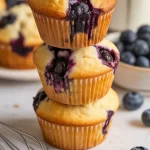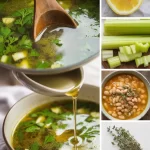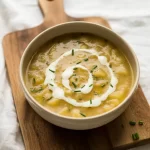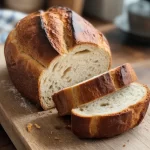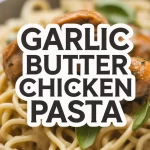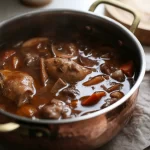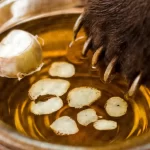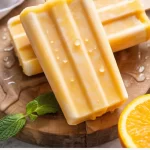I perfected a Crème Caramel Recipe using whole milk and egg yolks to create a light, silky Parisian brasserie classic that gleams with glossy caramel when unmolded.

I never expected a French Creme Caramel without cream to be this arresting. Using whole milk and egg yolks I get a custard that’s lighter than the brasserie versions but still silky, with a mirror-like caramel that forces you to turn the ramekin over.
It’s different to the Parisian flan in ways that are small but telling, and that difference is exactly why I keep making it. The texture shifts, the sweetness sits differently, and that reveal moment feels almost mischievous.
Try it and you’ll notice things you didn’t expect, and then want to remake it again.
Ingredients

- Whole milk: provides creamy texture, protein and calcium, mild sweetness keeps custard silky.
- Egg yolks: rich in fat and protein, add color and help custard set smooth.
- Granulated sugar (custard): pure carbs, sweetens and helps create that tender custard texture.
- Granulated sugar (caramel): melts and browns into deep, bittersweet flavor, mostly empty calories.
- Vanilla: tiny amount brings warm aroma and depth, almost no calories but big impact.
- Fine sea salt: a pinch boosts sweetness, balances flavors and brings out nuances.
- Butter for ramekins: optional, helps unmold cleanly and adds a faint buttery richness.
Ingredient Quantities
- 500 ml whole milk (about 2 cups)
- 5 large egg yolks
- 100 g granulated sugar (about 1/2 cup) for the custard
- 120 g granulated sugar (about 1/2 cup plus 2 tbsp) for the caramel
- 2 tbsp water for the caramel
- 1 tsp vanilla extract or seeds from 1 vanilla bean
- pinch of fine sea salt
- butter for greasing ramekins (optional)
How to Make this
1. Preheat your oven to 160°C (320°F) and set a kettle to boil for the water bath.
2. If using, lightly butter 6 small ramekins; set them on a baking tray you can fit in the oven. Make the caramel: put 120 g granulated sugar and 2 tbsp water in a small, dry saucepan over medium heat, don’t stir once it starts bubbling, just swirl the pan now and then until it turns a deep amber color, watch closely so it doesn’t burn.
3. As soon as the caramel is amber, remove from heat and quickly pour into the bottoms of each ramekin, tilting them so the caramel coats the base evenly; let the caramel set while you make the custard.
4. Warm the milk: put 500 ml whole milk and the vanilla (1 tsp extract or the seeds from 1 bean) in a saucepan, heat until steaming and tiny bubbles form at the edges, don’t let it come to a full boil.
5. In a bowl whisk the 5 large egg yolks with 100 g granulated sugar until the mixture lightens slightly and is smooth, about 1 minute, you don’t need to whip in air.
6. Temper the yolks: slowly pour about a third of the hot milk into the yolk mixture while whisking constantly, then pour the tempered yolk mix back into the remaining milk in the pan, stir gently and warm for just a minute to combine, add a pinch of fine sea salt.
7. Remove the custard from heat and strain it through a fine mesh sieve into a jug to remove any cooked bits or foam, this keeps the texture silky.
8. Pour the strained custard gently over the set caramel in the ramekins, fill to about 1 cm from the top. Place the ramekins in a deep baking dish and pour the boiling water from the kettle into the dish until it comes halfway up the sides of the ramekins.
9. Bake for 35 to 45 minutes until the custard is set at the edges but still has a little wobble in the center, remove the dish from the oven and let the ramekins cool on a rack to room temperature, then chill in the fridge at least 4 hours or overnight.
10. To unmold, run a thin knife around each ramekin, briefly dip the bottoms in hot water for 5 to 10 seconds to loosen the caramel, invert onto serving plates and let the caramel drizzle over the custard, serve cold.
Equipment Needed
1. Oven (preheat to 160°C / 320°F)
2. Kettle or pot to boil water
3. 6 small ramekins (buttered if you like)
4. Baking tray (to hold ramekins while you work)
5. Deep baking dish or roasting pan for the water bath
6. Small dry saucepan for the caramel
7. Medium saucepan for warming the milk
8. Mixing bowl for the yolks and sugar
9. Whisk (and a spatula to scrape the pan)
10. Fine mesh sieve and a heatproof jug or measuring jug for straining and pouring
FAQ
An Easy French Crème Caramel Recipe Without Cream And Why It’s Different To The Parisian Flan Substitutions and Variations
- Whole milk (500 ml): substitute with 250 ml evaporated milk + 250 ml water to match richness, or use full‑fat canned coconut milk (about 400–450 ml) thinned with 50–100 ml water for a dairy‑free version; warm gently before adding to eggs so it mixes smoothly, dont pour cold straight in or you might get tiny cooked bits.
- 5 large egg yolks: if you dont have enough yolks, use 3 whole eggs plus 2 extra yolks (keeps richness but yields a slightly firmer set), or 4 whole eggs if you cant separate eggs at all, expect a less silky texture.
- 120 g granulated sugar for the caramel: swap with light brown sugar 1:1 for deeper toffee notes (watch closely, it darkens faster), or use caster sugar if you want it to melt quicker; when using brown sugar add a splash of water and melt on medium low so it doesnt burn.
- Butter for greasing ramekins: use neutral oil (vegetable or grapeseed) or nonstick spray 1‑to‑1, or skip greasing entirely and rely on the caramel layer to release the custard once cooled—just be sure the caramel coats evenly so it wont stick.
Pro Tips
1) Keep your eye on the caramel, it goes from perfect to burned in seconds, so when it hits a deep amber pull it off the heat right away. If it keeps cooking from residual heat, swirl the pan a bit or set it on a cooler burner for a few seconds before pouring, otherwise you’ll get a bitter taste.
2) Temper slowly and strain no matter how confident you are, it saves you from little cooked egg bits and a grainy texture. I usually pour a small ladle of hot milk in while whisking, then strain the whole mix into the jug; smells and texture are smoother after that.
3) Water bath matters more than people think. Use hot water so the custards cook evenly, and put the ramekins on a towel in the tray before adding water so they dont slide and spill. If your oven runs hot, check a few minutes early, ovens lie sometimes.
4) Don’t overbake. You want the edges set and the middle to wobble slightly, it firms up while cooling. Let them cool to room temp before chilling, that prevents cracks and keeps the caramel smoother.
5) For easy unmolding, run a thin knife around the edge then dip the ramekin bottom in hot water for about 5 to 10 seconds, invert quickly. If the caramel stuck a bit, warm the bottom again rather than prying, it loosens fast with heat.

An Easy French Crème Caramel Recipe Without Cream And Why It's Different To The Parisian Flan
I perfected a Crème Caramel Recipe using whole milk and egg yolks to create a light, silky Parisian brasserie classic that gleams with glossy caramel when unmolded.
6
servings
242
kcal
Equipment: 1. Oven (preheat to 160°C / 320°F)
2. Kettle or pot to boil water
3. 6 small ramekins (buttered if you like)
4. Baking tray (to hold ramekins while you work)
5. Deep baking dish or roasting pan for the water bath
6. Small dry saucepan for the caramel
7. Medium saucepan for warming the milk
8. Mixing bowl for the yolks and sugar
9. Whisk (and a spatula to scrape the pan)
10. Fine mesh sieve and a heatproof jug or measuring jug for straining and pouring
Ingredients
-
500 ml whole milk (about 2 cups)
-
5 large egg yolks
-
100 g granulated sugar (about 1/2 cup) for the custard
-
120 g granulated sugar (about 1/2 cup plus 2 tbsp) for the caramel
-
2 tbsp water for the caramel
-
1 tsp vanilla extract or seeds from 1 vanilla bean
-
pinch of fine sea salt
-
butter for greasing ramekins (optional)
Directions
- Preheat your oven to 160°C (320°F) and set a kettle to boil for the water bath.
- If using, lightly butter 6 small ramekins; set them on a baking tray you can fit in the oven. Make the caramel: put 120 g granulated sugar and 2 tbsp water in a small, dry saucepan over medium heat, don't stir once it starts bubbling, just swirl the pan now and then until it turns a deep amber color, watch closely so it doesn't burn.
- As soon as the caramel is amber, remove from heat and quickly pour into the bottoms of each ramekin, tilting them so the caramel coats the base evenly; let the caramel set while you make the custard.
- Warm the milk: put 500 ml whole milk and the vanilla (1 tsp extract or the seeds from 1 bean) in a saucepan, heat until steaming and tiny bubbles form at the edges, don't let it come to a full boil.
- In a bowl whisk the 5 large egg yolks with 100 g granulated sugar until the mixture lightens slightly and is smooth, about 1 minute, you don't need to whip in air.
- Temper the yolks: slowly pour about a third of the hot milk into the yolk mixture while whisking constantly, then pour the tempered yolk mix back into the remaining milk in the pan, stir gently and warm for just a minute to combine, add a pinch of fine sea salt.
- Remove the custard from heat and strain it through a fine mesh sieve into a jug to remove any cooked bits or foam, this keeps the texture silky.
- Pour the strained custard gently over the set caramel in the ramekins, fill to about 1 cm from the top. Place the ramekins in a deep baking dish and pour the boiling water from the kettle into the dish until it comes halfway up the sides of the ramekins.
- Bake for 35 to 45 minutes until the custard is set at the edges but still has a little wobble in the center, remove the dish from the oven and let the ramekins cool on a rack to room temperature, then chill in the fridge at least 4 hours or overnight.
- To unmold, run a thin knife around each ramekin, briefly dip the bottoms in hot water for 5 to 10 seconds to loosen the caramel, invert onto serving plates and let the caramel drizzle over the custard, serve cold.
Notes
- Below you’ll find my best estimate of this recipe’s nutrition facts. Treat the numbers as a guide rather than a rule—great food should nourish both body and spirit. Figures are approximate, and the website owner assumes no liability for any inaccuracies in this recipe.
Nutrition Facts
- Serving Size: 134g
- Total number of serves: 6
- Calories: 242kcal
- Fat: 6.4g
- Saturated Fat: 2.9g
- Trans Fat: 0.1g
- Polyunsaturated: 0.3g
- Monounsaturated: 1.7g
- Cholesterol: 161mg
- Sodium: 56mg
- Potassium: 123mg
- Carbohydrates: 36.7g
- Fiber: 0g
- Sugar: 36.7g
- Protein: 4.9g
- Vitamin A: 242IU
- Vitamin C: 0mg
- Calcium: 110mg
- Iron: 0.37mg


